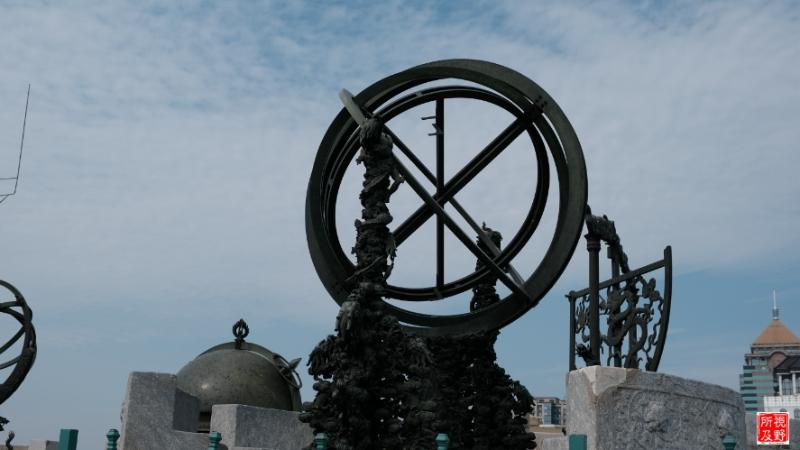Who built the Beijing Ancient Observatory?
The history of the Beijing Ancient Observatory can be traced back to the Yuan Dynasty, when Guo Shoujing and Wang Xun built the Four Heavenly Gates and the Imperial Astronomical Bureau. During the Ming Dynasty, an observatory was established near the Imperial Astronomical Bureau, equipped with ancient armillary spheres, simplified armillary spheres, celestial globes, and other instruments, and the main building, the Purple Palace, was constructed.

Reference:Beijing Ancient Observatory
1. History of the Observatory
- Historical Changes from the Yuan Dynasty to the Qing Dynasty
The history of the Beijing Ancient Observatory can be traced back to the Yuan Dynasty, when it was established by Guo Shoujing and Wang Xun, who built the Four Heavenly Gates and the Imperial Astronomical Bureau. During the Ming Dynasty, an observatory was established near the Imperial Astronomical Bureau, equipped with ancient armillary spheres, simplified armillary spheres, celestial globes, and other instruments, and the main building, the Purple Palace, was constructed.
- Changes during the Qing Dynasty
After the Qing Dynasty, the Manchu regime took over Beijing, and the observatory was renamed the Observing Auspicious Platform. From 1669 to 1674, Belgian Jesuit missionary Ferdinand Verbiest was commissioned by Emperor Kangxi to design six new astronomical instruments, similar to those of Western astronomer Tycho Brahe. These six new astronomical instruments included equatorial armillary spheres, ecliptic armillary spheres, quadrant instruments, celestial globes, sextants, and astrolabes. In 1715, Kilian Stumpf was appointed to manufacture azimuthal equatorial instruments. During the Qianlong period (1744), Emperor Qianlong ordered the construction of the last instrument—the new armillary sphere (Ji Heng armillary sphere).
- Development during the Qianlong Period and Modern Times
The last instrument constructed during the Qianlong period was the new armillary sphere (Ji Heng armillary sphere). During the Boxer Rebellion in 1900, ten instruments were divided between Germany and France. The French took five instruments back to their embassy and returned them the following year. However, the Germans took another five instruments back to their country and displayed them in Potsdam Hall. It was not until the end of World War I that, at the request of the Chinese government, Germany returned these five instruments to China in 1921. In 1929, the Beijing Ancient Observatory ended its active observation life and became the first astronomical museum in China.
2. Important Periods and Events
- Period of Japanese Invasion
During the Japanese invasion in 1933, some instruments were moved to the Purple Mountain Observatory for safekeeping.
- Development after the Founding of New China
After the founding of the People's Republic of China, the Beijing Ancient Observatory became the historical wing of the Beijing Planetarium. In 1982, the Beijing Ancient Observatory was declared a national key cultural relics protection unit by the National Cultural Relics Protection Bureau and reopened to the public in 1983.
3. Geographic Location
- Location of the Beijing Ancient Observatory
The Beijing Ancient Observatory is located in Beijing, with specific coordinates at 39°54′22″N latitude, 116°25′43″E longitude, and an altitude of 49 meters.
4. Brief Inventory
- Overview of Astronomical Instruments
There are eight Qing Dynasty bronze instruments on the platform, including equatorial armillary spheres, ecliptic armillary spheres, and celestial globe.
- Illustrations of the Observatory
Illustrations of the observatory drawn by Ferdinand Verbiest depict the appearance and layout of these instruments. The observatory is currently the only example in the world equipped with Tycho's instruments.
5. Management and Use
- Current Usage
In 1982, the observatory was listed as a national key cultural relics protection unit. It has been open to the public since 1983 and has been free to visitors since 2008.
- Conservation Measures
The government provides regular funding for the preservation, research, and maintenance of the observatory.
Question: What is the historical origin of the Beijing Ancient Observatory?
Answer: The history of the Beijing Ancient Observatory dates back to the Yuan Dynasty, when Guo Shoujing, Wang Xun, and others constructed the Four Heavenly Platforms and the Imperial Astronomical Bureau. During the Ming Dynasty, an observatory was built on the city wall near the Imperial Astronomical Bureau.
Question: What astronomical instruments are found at the Beijing Ancient Observatory?
Answer: The Beijing Ancient Observatory houses eight bronze instruments from the Qing Dynasty, including equatorial armillary spheres, ecliptic armillary spheres, and celestial globes. Among them, the equatorial armillary spheres, ecliptic armillary spheres, quadrant instruments, celestial globes, sextants, and altazimuth instruments were six new astronomical instruments designed by Belgian Jesuit missionary Ferdinand Verbiest between 1669 and 1674.